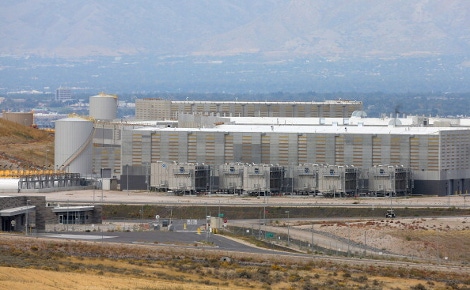Ten Key Figures from Latest Progress Report on US Government IT ReformTen Key Figures from Latest Progress Report on US Government IT Reform
Agencies, except a handful, remain slow to optimize infrastructure and realize savings

While estimated savings from US federal government IT reform initiatives of the last five years are now in the billions of dollars, they are still far from the potential savings the Office of Management and Budget, tasked with managing implementation of the reforms and tracking their progress, estimates can be achieved.
According to the latest report on the reforms by the Government Accountability Office, while a handful of agencies have made substantial progress optimizing the way they use IT infrastructure, most of the 26 agencies and departments that participate in the efforts are having trouble complying with the processes OMB has devised.
Then federal CIO Vivek Kundra launched the Federal Data Center Consolidation Initiative in 2010, recognizing that the government was spending too much money on its sprawling data center infrastructure. Today, OMB estimates the government can save about $3 billion from the initiative by the end of this year.
Kundra followed FDCCI with a 25-point IT Reform Plan, which expanded reform to include efforts beyond simply shuttering redundant data center, things like optimizing IT acquisition, improving operational efficiency, use cloud services, sharing IT resources by agencies, and shortening release cycles. In other words, Kundra and his team wanted government IT to be more like corporate IT, with a more centralized IT organization.
Another important initiative launched in March 2012. Called PortfolioStat, it requires agencies to take a more holistic look at their IT portfolio to identify redundant systems and applications (rather than redundant facilities), consolidate them, while leaving the core systems in place and sharing them.
One month after the release of PortfolioStat, OMB formalized the sharing requirements in the IT Shared Services Strategy. This strategy requires agencies to share commodity IT resources, such as software licenses, email systems, and human resource systems. OMB estimated there were billions of dollars to be saved from sharing these resources.
Here’s a summary breakdown of estimated savings from federal IT reform initiatives of the last five years:

Here are 10 key figures from the latest GAO report that paint a picture of the current state of federal government IT reforms:
$80 billion:
Estimated total federal departments and agencies spend each year to meet their IT requirements.
$3.6 billion:
Estimated total 24 of the 26 agencies that take part in OMB’s IT reform initiatives saved between fiscal 2011 and fiscal 2014 as a result of their participation. The two agencies that did not report any savings were NASA and Office of Personnel Management.
$2.5 billion:
Estimated savings attributed to departments of Defense, Homeland Security, and Treasury, and the Social Security Administration. That’s only four agencies contributing close to 70 percent of the total savings by 24 agencies.
$2 billion:
Portion of the total savings attributed to government data center consolidation and optimization efforts.
5:
The number of agencies that implemented OMB’s guidance on submitting plans for reducing IT spending and reinvesting the dollars saved. That’s five out of 27 agencies that were required to submit such plans.
0:
The number of agencies that tracked performance of their reinvestment efforts. The report highlighted four select agencies that documented proposed IT reinvestments of $350 million in the development of their fiscal 2014 budgets. They were the Social Security Administration and the departments of Education, Interior, and Labor. They weren’t the only agencies that submitted reinvestment plans. OMB selected them because they proposed to reinvest more than others.
OMB’s “cut and reinvest” program started in 2012, requiring agencies to include in their 2014 budgets ways to reduce their IT spend by 10 percent of their overall spending and plans for reinvesting from half to all of the money saved.
1:
The number of agencies that met all requirements of OMB’s PortfolioStat initiative, designed to identify and consolidate redundant systems and applications. All agencies addressed four of the initiative’s seven requirements.
$1.1 billion:
Total amount OBM estimated agencies have saved as a result of PortfolioStat in fiscal 2013 and 2014.
1,690:
Approximate number of government data centers agencies have closed between February 2010, when FDCCI kicked off, and end of May 2015, according to Data.gov.
2,430:
Approximate number of government data centers agencies expect to have closed between 1 June and end of this month.
Most Gov. "Data Centers" are Tiny
The numbers of data centers closed and slated for closure can be surprisingly high. That’s because agencies count everything from a three-square-foot IT footprint to a 90,000-square-foot facility as data centers for the purposes of FDCCI. Of the 4,000-plus “data centers” already closed or scheduled to be closed before the end of the month, about 2,700 have gross area of 100 square feet or less. About 1,000 of them are between 100 and 1,000 square feet. The largest facility on the list is a 90,000-square-foot Department of Defense data center, expected to be closed before 30 September.
About the Author
You May Also Like







